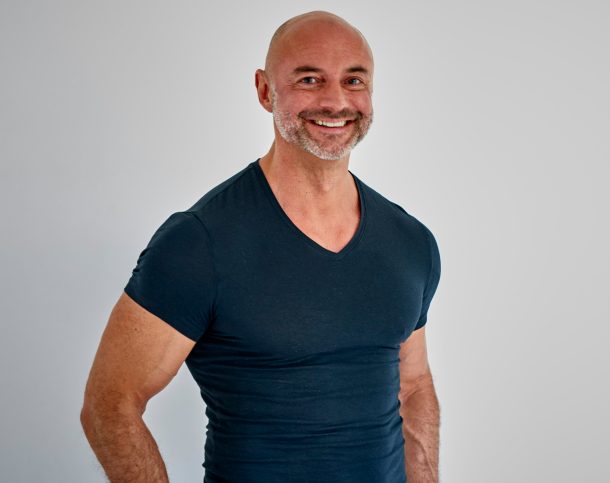“Can you help me create my brand purpose, Arnold?”
I reckon I’ve been asked this more times than a waiter’s been asked for the check!
Slight exaggeration I know, but don’t tell me you haven’t struggled with this one too!
It’s a challenge we’ve all faced, perhaps you’re wrestling with it now?
As a coach you have the power to transform lives, but how do you express that?
To create a thriving coaching practice being able to articulate a clear, compelling brand purpose that reflects your values and resonates with your ideal clients is critical to success.
Simple! (Said no one ever.)
For starters, let’s explore what a brand purpose is, why it’s essential for your coaching business and how to create one that connects with clients and aligns with your values.
I’ll also share some of the key challenges my clients have faced and provide actionable tips and strategies for overcoming them.
I hope you’ll find these useful too.
What is Brand Purpose?
Your brand purpose is the reason your coaching business exists.
It’s your guiding compass, the soul of your brand. The driving force behind every action you take, from the services you offer to the way you interact with clients.
A clearly defined brand purpose will help you stand out in a crowded market, build strong connections with your target audience, and inspire loyalty and trust.
Why is Brand Purpose Important?
A powerful brand purpose can:
- Differentiate your coaching practice from competitors by showcasing your unique approach and values.
- Attract and retain ideal clients who share your beliefs and are drawn to your authentic message.
- Guide your decision-making and ensure your actions are always aligned with your core values.
- Inspire your suppliers/associates/team (if you have them) to work passionately towards a common vision.
Recognising the value of your brand purpose is vital before you jump straight into trying to write one.
Now that’s settled, let’s dive into a step-by-step guide to creating a compelling one that defines your brand soul.
Your step-by-step guide to creating a focused brand purpose
1. Focus your passion towards forging a deep emotional connection with your ideal clien
To forge an emotional connection with your clients, means first understanding their deepest desires, fears, and aspirations and matching that to what you’re passionate about.
Start by asking yourself:
- Who is my ideal client?
- What challenges are they facing?
- How can my coaching services help them overcome these obstacles and achieve their goals?
- How much do I love what I do?
Next, think about the emotions you want your brand to evoke in your clients. Do you want them to feel empowered, inspired, or reassured?
Use these emotions as a foundation for crafting your brand messaging and visual identity.
Example: “I help extraordinary people achieve impossible goals” – Rich Litvin
Actionable Exercise: Create an empathy map for your ideal client and chart what you love doing.
This exercise will help you gain a deeper understanding of their emotional needs and desires, allowing you to create a brand purpose that truly resonates with them.
2. Create a powerful, unique and inspiring brand concept to build your business on
Your brand idea is the central concept that encapsulates your coaching practice’s essence. It should be unique, ownable, and motivating – something that sets you apart from your competitors and inspires clients to choose you.
To develop your brand idea, consider the following questions:
- What is my unique coaching approach or methodology?
- What outcomes or impact can clients expect from working with me?
- How do I want clients to describe their experience with my coaching practice?
Actionable Exercise: Write down your answers to these questions, and use them as a basis for crafting a short, powerful brand idea statement.
Example: “To help people everywhere live their lives with greater clarity, purpose, and passion.” BetterUP
3. Align your values to infuse and delight client experiences
As a coach, your values are at the heart of your brand purpose. By instilling these values into your coaching practice, you’ll create exceptional experiences for your clients and build a reputation for integrity and authenticity.
First, identify your core values. These are the guiding principles that inform your approach to coaching and decision-making.
Next, find ways to weave these values into every aspect of your business, from your marketing materials to your interactions with clients.
Actionable Exercise: Develop a list of your top 3 core values and brainstorm ways to embody these values in your coaching practice.
Example: “To inspire people to do what inspires them, so that, together, each of us can change our world for the better”. Simon Sinek
Values: Inspiration, Collaboration and Impact.
If you choose to work through these exercises you will create ideas and insights necessary for crafting your Brand Purpose.
Now let’s put it all together using a powerful framework.
Brand Purpose Framework
Your Brand Purpose = (Action Verb) + (Target Audience) + (How) + (Outcome/Change)
Let’s break it down:
Action Verb: A powerful verb that describes what you do. Examples include: empower, connect, inspire, transform, partner, help, support etc.
Target Audience: The specific group of people that your brand is aiming to serve. Examples: Entrepreneurs, Up and coming managers, stay at home Mum’s, etc
How: Your unique approach, method, or value proposition. Examples include: through personalised one-on-one coaching sessions, or Rapid Transformation Technology etc
Outcome/Change: This outlines the impact you aim to have on your target audience or the broader world. Examples include: Transforming lives, or elevating the quality of education in underserved communities
An example of using this formula might be:
“To inspire young entrepreneurs (Target Audience) by providing (Action Verb) innovative coaching resources (How), empowering them to create sustainable businesses that contribute to their communities (Outcome/Change).”
The golden rule in crafting your purpose is to keep it short and sweet. By encapsulating it in one sentence ensures it’s impact focused and efficient.
This Brand Purpose Framework enables you to create a purpose statement that is focused, clear, and resonates with your target audience.
It articulates not just what you do and for whom, but how and why you do it – the ultimate key to forming deeper, more meaningful connections with your clients.
Overcoming challenges in creating a Brand Purpose
When I first sat down to think about my brand purpose, it felt as is I was being tortured by a Zen Koan. It’s definitely not as easy as it looks.
However, stay with it and things will become clearer in time.
Here are some tips to overcome overthinking:
- Be patient: Developing a powerful brand purpose takes time and reflection. Don’t rush the process—give yourself space to explore your values, passions, and unique coaching approach.
- Seek feedback: Share your brand purpose with trusted friends, colleagues, or mentors, and ask for their honest feedback. Be open to constructive criticism and use it to refine your message.
- Embrace authenticity: Your brand purpose should be a genuine reflection of who you are as a coach. Don’t try to imitate others or adopt a persona that doesn’t feel true to you.
Conclusion
Your brand purpose is the North Star that guides your branding strategy, illuminates your unique value proposition, and enables you to connect with your audience authentically.
By harnessing your passion, creating a unique brand idea, and fostering a values-driven culture, you can overcome the challenges and build a compelling brand purpose that truly resonates with your clients.


